America's gun culture - in seven charts
-
Publisher Media caption
,
Watch: Golden State Warriors coach Steve Kerr condemns gun violence in the US
A school shooting in Uvalde, Texas, involving young children has reignited the national US debate about access to firearms. What does the data tell us about gun culture and its impact?
Firearms deaths are a fixture in American life.
There were 1.5 million of them between 1968 and 2017 - that's higher than the number of soldiers killed in every US conflict since the American War for Independence in 1775.
In 2020 alone, more than 45,000 Americans died at the end of a barrel of a gun, whether by homicide or suicide, more than any other year on record. The figure represents a 25% increase from five years prior, and a 43% increase from 2010.
But the issue is a highly political one, pitting gun control advocates against sectors of the population fiercely protective of their constitutionally-enshrined right to bear arms.
How many guns are there in the US?
While calculating the number of guns in private hands around the world is difficult, figures from the Small Arms Survey - a Swiss-based leading research project - estimate that there were 390 million guns in circulation in 2018.
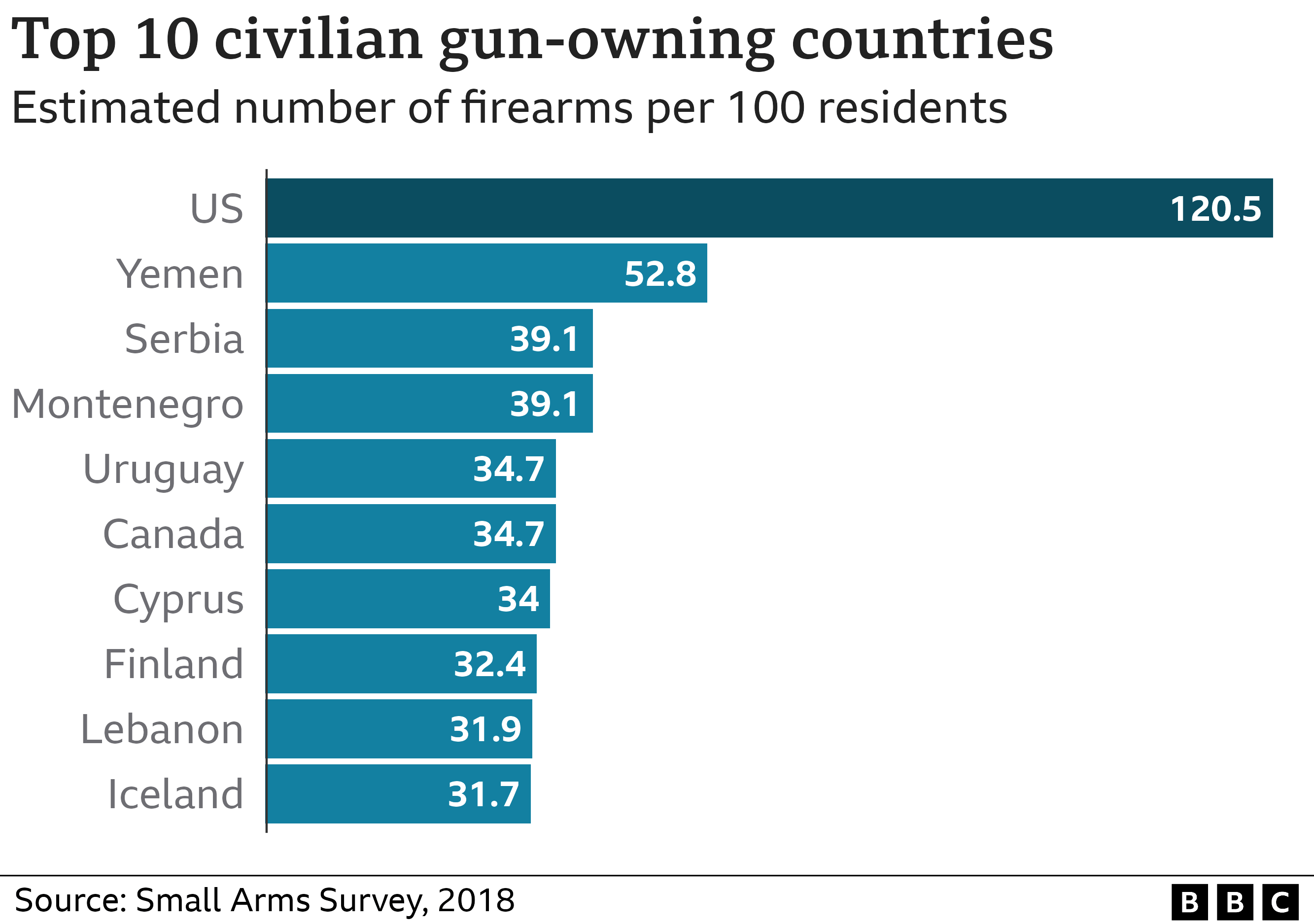
The US ratio of 120.5 firearms per 100 residents, up from 88 per 100 in 2011, far surpasses that of other countries around the world.
More recent data also suggests that gun ownership grew significantly over the last several years. One study, published by the Annals of Internal Medicine in February, found that 7.5 million US adults - just under 3% of the population - became first new gun owners between January 2019 and April 2021.
This, in turn, exposed 11 million people to firearms in their homes, including 5 million children. About half of new gun owners in that time period were women, while 40% were either black or Hispanic.
A separate study, published by the American Academy of Pediatrics in 2021, linked a rise in gun ownership during the pandemic to higher rates of gun injuries among - and inflicted by - children.
How do US gun deaths break down?
According to the US Centers for Disease Control and Prevention (CDC), a total of 45,222 people died from gun-related injuries of all causes during 2020, the last year for which complete data is available.
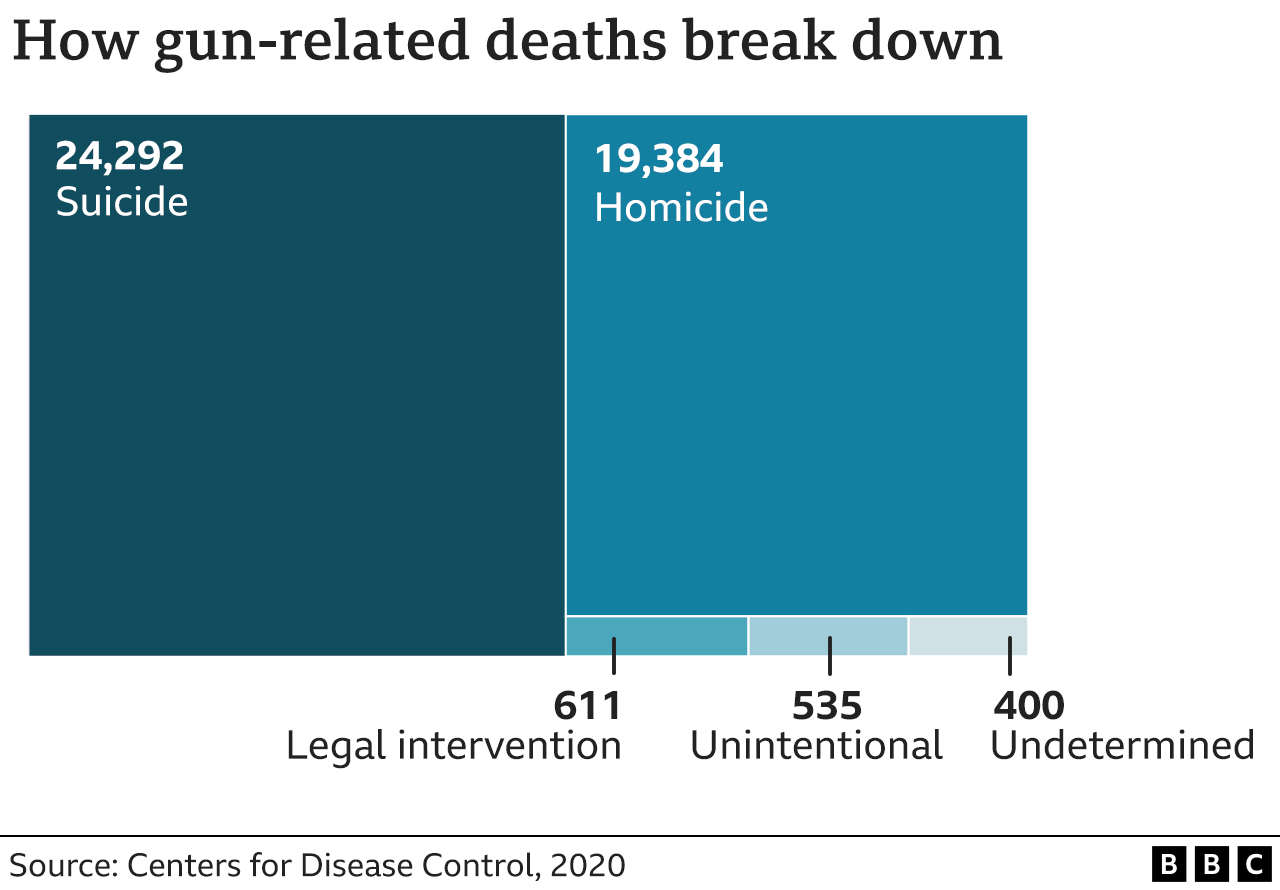
And while mass shooting and gun murders generally garner more media attention, of the total, 54% - about 24,300 deaths - were suicides.
A 2016 study published in the American Journal of Public Health found there was a strong relationship between higher levels of gun ownership in a state and higher firearm suicide rates for both men and women.
Advocates for stricter gun laws in the United States often cite this statistic when pushing lawmakers to devote more resources to mental health and fewer to easing gun restrictions.
How do US gun killings compare with other countries?
In 2020, 43% of the deaths - amounting to 19,384 people - were homicides, according to data from the CDC. The figure represents a 34% increase from 2019, and a 75% increase over the course of the previous decade.
Nearly 53 people are killed each day by a firearm in the US, according to the data.
The data also shows that the vast majority of murders, 79%, were carried out with guns.
That's a significantly larger proportion of homicides than is the case in Canada, Australia, England and Wales, and many other countries.
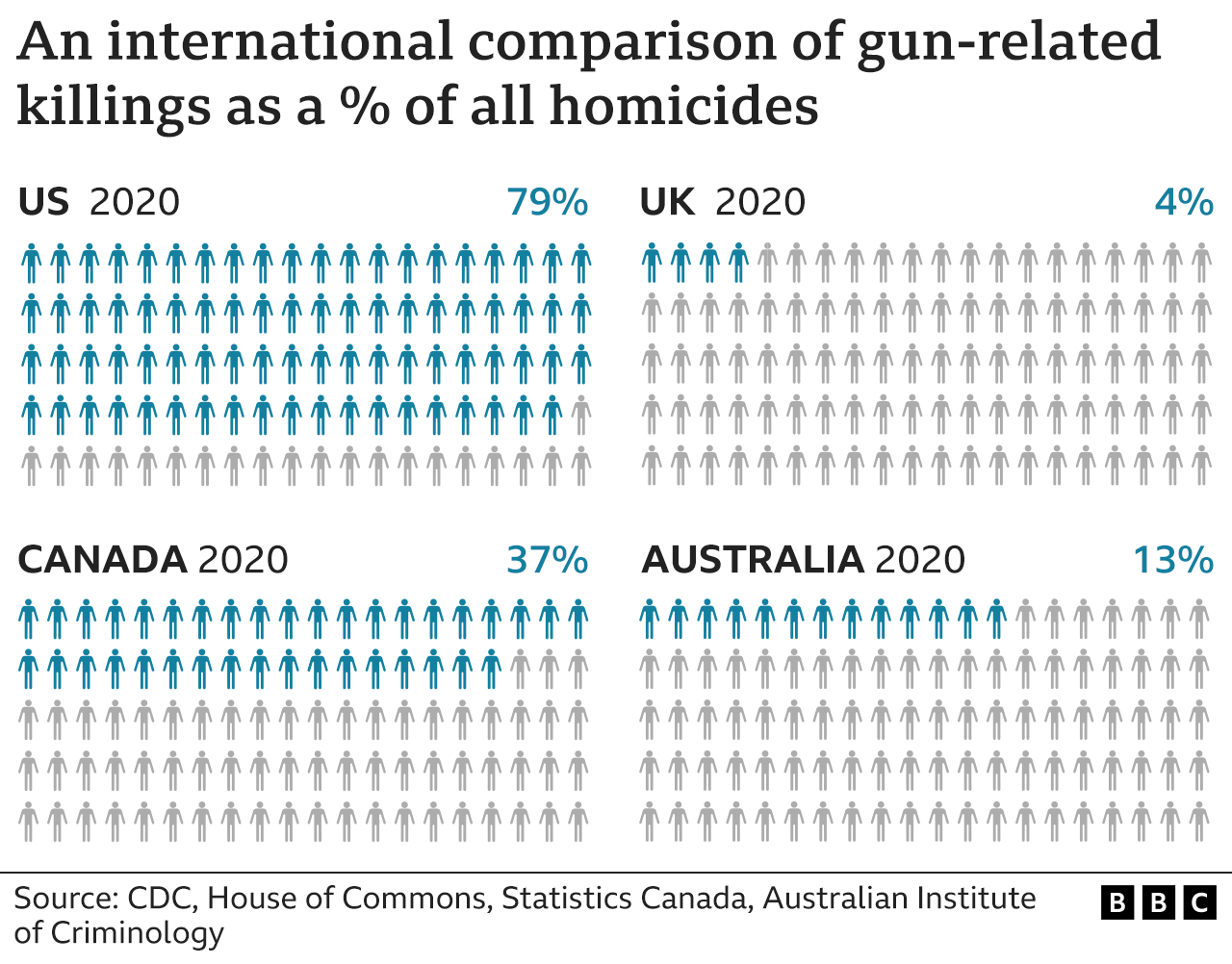
Are mass shootings becoming deadlier?
Deaths from the "mass shootings" that attract international attention, however, are harder to track.
While the country does not have a single definition for "mass shootings", the FBI has for over a decade tracked "active shooter incidents" in which "an individual actively engaged in killing or attempting to kill people in a populated area".
According to the FBI, there were 345 "active shooter incidents" in the United States between 2000-2020, resulting in more than 1,024 deaths and 1,828 injuries.
The deadliest such attack, in Las Vegas in 2017, killed more than 50 people and left 500 wounded. The vast majority of mass shootings, however, leave fewer than 30 people dead.
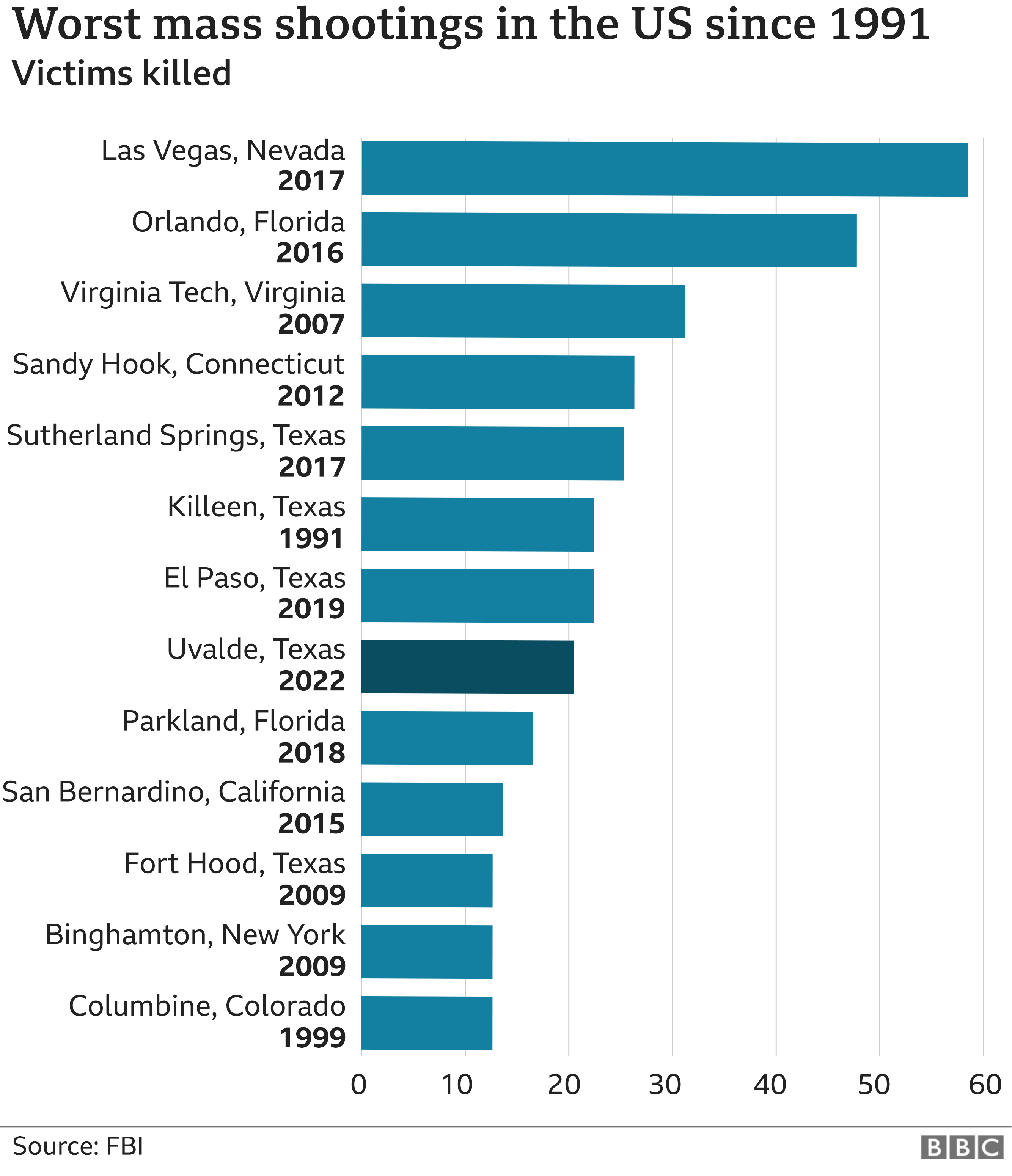
Who supports gun control?
Despite widespread and vocal public outrage - often in the wake of gun violence - American support for stricter gun laws in 2020 fell to the lowest level since 2014, according to polling by Gallup.
Only 52% of Americans surveyed said they wanted stricter gun laws, while 35% said they should remain the same.
Eleven percent surveyed said laws should be "made less strict".
The issue is also one that is hyper-partisan and extremely divisive, falling largely along party lines.
"Democrats are nearly unanimous in their support for stricter gun laws," the same Gallup study noted, with nearly 91% in favour of stricter gun laws.
Only 24% Republicans, on the other hand, agreed with the same statement, along with 45% of Independent voters.
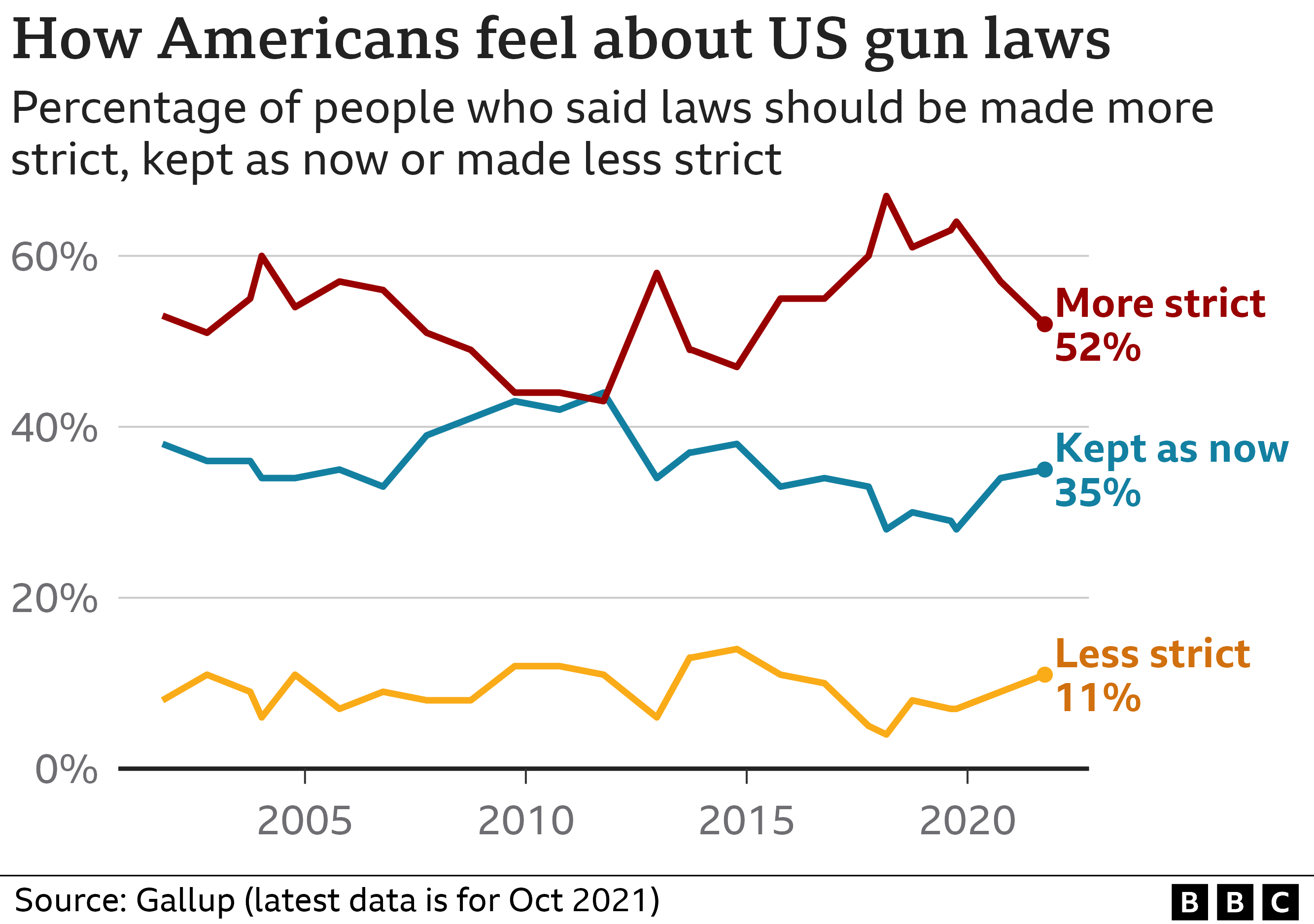
How the American Dream Has Changed Over
Gale Student Resources in Context, 2016
https://wjccschools.org/wp-content/uploads/sites/2/2016/05/How-the-American-Dream-Has-Changed-Over-Time.pdf
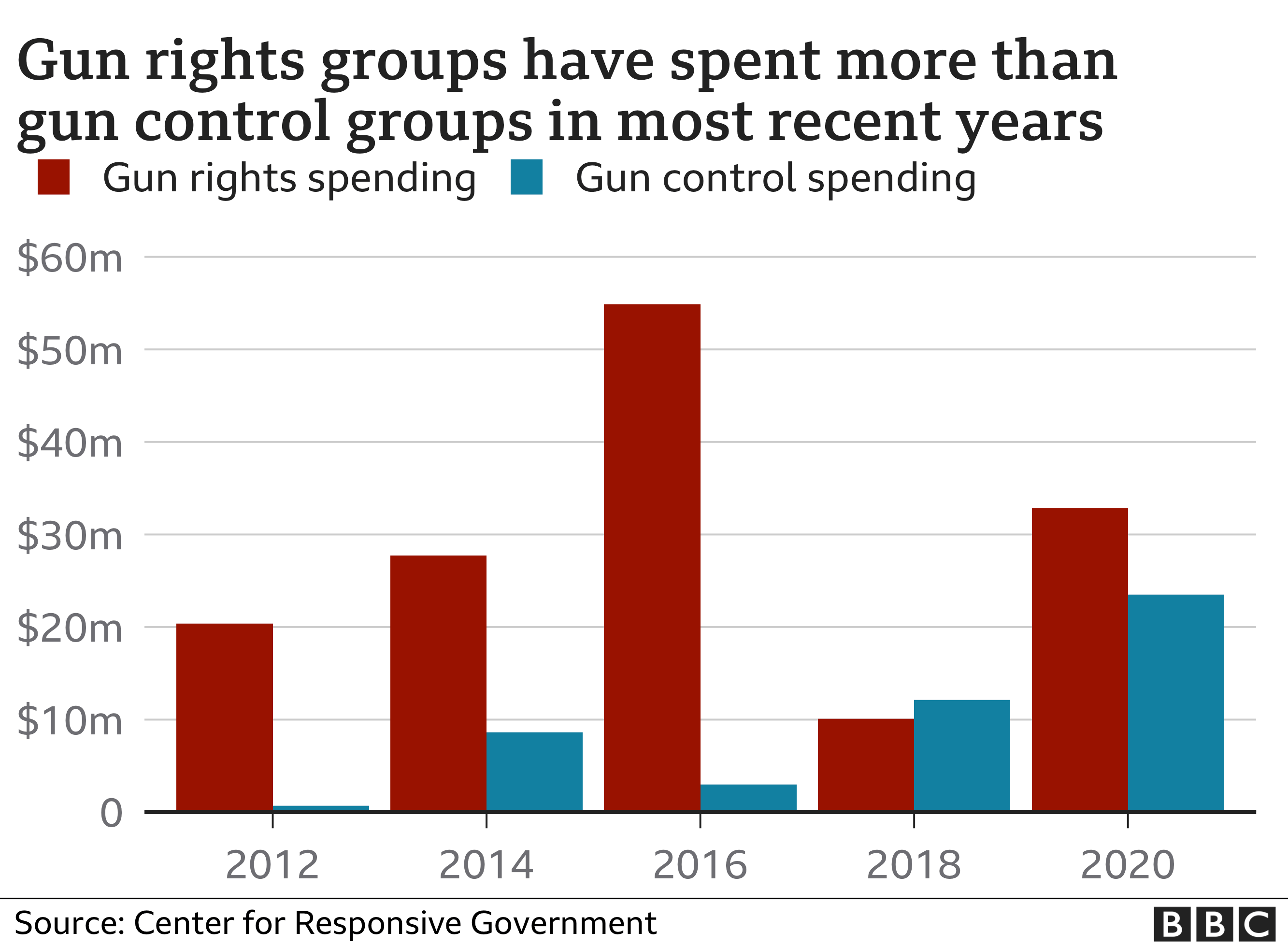
A number of states have also gone as far as to largely eliminate restrictions on who can carry a gun. In June 2021, for example, Texas Governor Greg Abbott signed into law a "permitless carry bill" that allows the state's residents to carry handguns without a license or training.
Similarly, on 12 April Georgia became the 25th in the nation to eliminate the need for a permit to conceal or openly carry a firearm. The law means any citizen of that state has the right to carry a firearm without a licence or a permit.
The law was backed by the NRA, and leaders within the organisation called the move "a monumental moment for the Second Amendment".